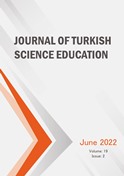Development of Augmented Reality Application for Biology Education
Keywords:
Virtual Reality, augmented reality, biology education, anatomyAbstract
In biology education which is an inseparable discipline of medical and veterinary education, it is of great importance that enabling students to make practice in real conditions and gain knowledge and skills related to their professional fields during their education. It is necessary to adapt the new technologies rapidly to education rather than the use of cadavers or laboratory animals, especially when making practice directly related in human and animal anatomy. For this purpose, virtual and augmented reality applications, which have been developed rapidly in recent years, come to the fore as a highly effective technique with the possibility of interacting visually with the objects they give to the user. In this study, the techniques were examined that used in order to increase the learning performance in biology, anatomy, physiology and experimental animals and the process was examined to develop a specific mobile application on Unity3D application. It is envisaged that the difficulties in providing materials for students and ethical debates on the use of experimental animals can be overcome with the dissemination of augmented reality applications and virtual laboratories developed as a result of procedures such as the needs analysis, lesson or course content and scenario writing processes in addition to software development.
